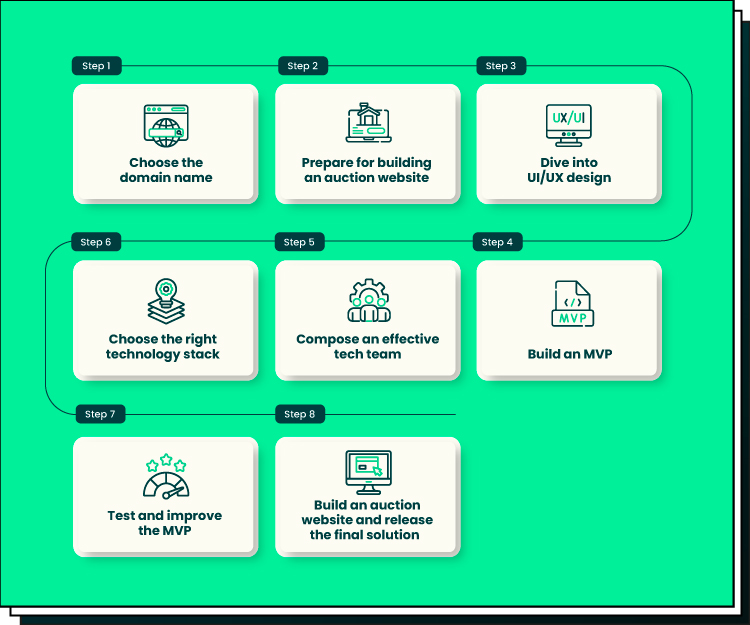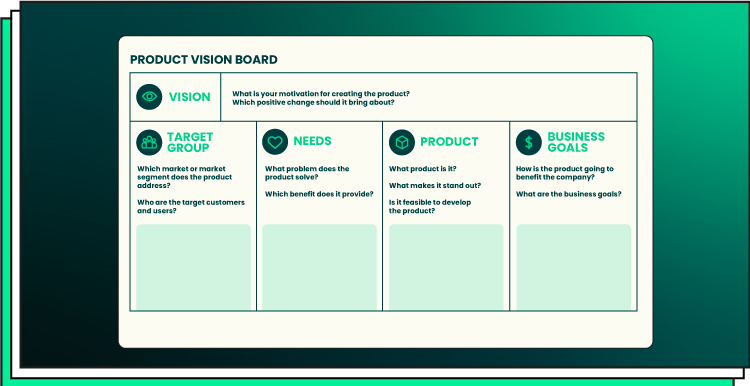Building an online auction platform isn’t easy. It takes more than just technical skills to build an auction website; your team also needs expertise in project management, product discovery, marketing, quality control, and much more.
Auction platforms play a crucial role in today’s digital economy. They create dynamic marketplaces where buyers and sellers can connect in real time, driving competition and often better prices. Whether it’s art, collectibles, or industrial equipment, bidding solutions open up opportunities for businesses and individuals worldwide, making the platform’s reliability and user experience critical.
According to Technavio, the online auction market is expected to grow by USD 3.98 billion at a CAGR of 14% by 2029. This growth highlights the strong potential of an online auction platform as a business solution. More and more companies are tapping into this model to reach wider audiences, boost user engagement, and create new revenue streams.
This article is here to make that process easier for you. We’ve teamed up with our top website development experts to break down what it really takes to build a successful auction marketplace. By the end, you’ll have a clear picture of the effort and resources needed to create a smooth, engaging, and bug-free bidding experience that stands out in a competitive market.
What Is an Auction Website?
Let’s start the journey of building an online auction website with the definition. An online auction platform is a site used to organize and hold auctions. The main principle of all auctions is the competition between bidders. During an auction, potential buyers bid on the goods of their interest. The winner is the potential buyer offering the highest bid. The latter gets the right to buy the auction item for the sum they bid.
The purpose of an auction portal or bidding system is to streamline the organization and process of holding auctions, as well as automate most of the procedures. The well-known examples of online auction marketplaces are eBay and Amazon, which started as e-commerce websites.
Why You Should Build an Auction Website
When building an online auction website, you will be interested in the prospects of such an idea. In recent years, auction marketplaces have grown in popularity, like other online solutions. Due to convenience and efficiency, auction portals attract many users by providing them with the following benefits:
- No barriers. Sellers and potential buyers use auction platforms because they later destroy barriers. By having access to the Internet, users can participate in auctions from anywhere. This enables auction website owners to attract a broad audience to their solutions, no matter their location and language.
- No limits. Physically, one person cannot be present at two or more auctions conducted in real life. In contrast to this, auction platforms enable people to participate in multiple auctions simultaneously and bid on products at any time during the product exhibition.
- Flexibility. By using an auction platform, people can take on different roles. They can be both sellers and buyers and switch their roles by taking part in multiple auctions.
- A lot of interesting features. All the features and opportunities are presented to the bidding platforms’ users at once. The core features when building an online auction website include listing, payment features, and item delivery. To outstand the competition, we can integrate unique and more interesting features into your software solution.
- Intuitiveness. Sometimes, figuring out the auction rules and procedure poses a challenge for people. A bidding website solves this, too. Users are guided through the auction process with the help of tips and clues. What’s more, they can refer to the rules and procedures outlined on the marketplace without disturbing other people.
Forbytes is a software development company that can help you create a site with an easy-to-use interface to please all auction participants. If you need to build an auction website, our team can assist.
Essential Features of Online Auction Software
The functionality of an online auction website varies depending on the business niche. However, there exists a list of basic features to add when building an auction website to give both sellers and buyers enough flexibility and convenience. Here is the feature list depending on the user role.
Seller features
Sellers use online auction platforms to list, promote, and sell their products. They need the following features:
- Add an item to sell
- Add, edit, and delete item descriptions
- Upload, change, and remove the high-resolution images of an item
- Set the starting bid (optional)
- Create item categories and use them to sort their items
- Display or hide items in listings
- Schedule and launch auctions;
- Customize the auction settings
- Track the auction and bids in real time
- Get real-time notifications
- View their auction history
- Accept payments
- Interact with auction winners (send invoices, send messages, arrange the item delivery)
Buyer features
When you create an online auction website, remember to add auction features for buyers (or bidders). As a bidder, a user should be capable of the following:
- Sort and search for the auction events by item category, properties, posting date, auction time, relevance, etc
- Search for a product or auction using a search bar or another functionality
- Register for an auction
- Have the bidding function and the chance to increase bids
- Track the auction and bids in real-time
- Get real-time notifications
- View their bid history
- Send payments
- Interact with sellers (send payments, provide delivery details, send messages, etc.)
Admin features
The role of admins is to facilitate the interaction between bidders and sellers, promote the online auction, and advertise your auction website. Here are the auction features they should have in the admin profile:
- Organize, edit, and launch email marketing campaigns and newsletters
- Conduct automated and manual verifications for the products to sell, following the auction website’s policies and rules
- Manually check on the buyer and seller accounts and block or disable those violating policies
- Generate and export reports on auction website activity
- Access website analytics
- Manually modify actions
- Interact with bidders and sellers (send emails, messages, etc.)
Build an Online Auction Website in 13 Simple Steps
We suggest the following steps for building an online auction website. The model we describe is flexible and can be adjusted to your business requirements.
Step 1: Choose the domain name for your own auction website
The average auction business tries to choose a name that coincides with the name of its auction website or brand. Thus, you should use this step to make up your site name as well.
Choose among the short and engaging domain names that are easy to remember and attract user attention. Select the top-level domains if possible (such as .com, .org, or .net). They will add authority to your auction website and positively affect SEO. Such factors as the name’s length, memorability, and keyword use have an impact on your Google ranking.
Step 2: Prepare for building an auction website
Start the preparation by developing a product vision. Product vision is a statement of the long-term value or mission of your auction website. It’s usually documented in written form and shared with everyone in a team to make sure all team members have the same understanding of the project. Here are the facts and information you can include in your product vision statement:
When preparing to build online auction software, you should clearly understand who your audience is, what their needs are, and what needs you will address with your website. To collect all this data, you will conduct research. Data will help you validate your initial assumptions and improve your product vision by incorporating the research insights into the mission statement.
Step 3: Decide on the auction website features
After you master the product vision, you will have to get an overall understanding of what your product is in terms of its features and functionality. Make a list of features to add when building an auction website by referring to our previous section.
Experienced online auction site developers will advise you on extra features to add to your solution to build a custom auction and stand out from the competition. Contact us if you need help with auction website development.
Step 4: Decide on the integrations for your custom auction website
Choose the services your website will be integrated with. For instance, you may have to integrate your auction platform with shipping services to deliver the auction items to the buyers. Choose the optimal shipping services considering your location, shipping costs, and popular shipping methods.
You should also select the payment integrations to be added when building an auction website. Review the most popular payment options in your focus area. For example, Square, Stripe, and PayPal are among the most popular secure payment gateways in the US.
Finally, think of social service integrations. By integrating social services, you will ease the sign-up process and enable users to link their accounts to social media. This, in turn, can positively affect the awareness of the potential audience of your brand.
Step 5: Choose a monetization model
Obviously, you expect your custom auction software to bring you profit. This can be done in the following ways:
- Seller fees. After you create an auction website, you can charge a fee from sellers. This can be some percentage of the item’s final price or the fixed cost of launching an auction.
- Byer fees. For instance, you can charge a fee for the transaction they make.
- Listing fees. Sellers will pay a commission for an item to be visible in listings.
- Promotion fees. You can earn from ads placed on your auction site or charge a fee for advertising the seller’s items (or prioritizing them in listings).
You can combine different monetization models. However, do not demand a lot from your first users. You can increase the fees or add new monetization models as your auction website grows. But at the start, it’s better to offer some free-of-charge features and give the audience some time to get used to your site.
Step 6: Prepare the technical requirements
For this task, you will have to involve your technical team. Technical requirements will give the team guidance on what kind of product they should develop and help you choose the right technology stack for your project. Also, technical requirements will make it easier for you to align your product vision with your actual capabilities.
When thinking out the technical requirements, consider the following:
- Auction website performance. When building an auction platform, decide on the approximate number of users you expect your website to have daily. This number will make it easier for developers to understand how big the website should be. Also, discuss the ideal page loading speed with your team.
- Site structure. Make a list of the pages your website will consist of. For each page, create a hierarchy demonstrating the page’s elements, buttons, and features people will use to navigate the site and consume your services.
- Wireframes. For each page, visualize the structure you prepared in the previous point. Wireframes demonstrate what your page will look like and what elements your audience will see and interact with.
- Compatibility. Define the devices and browsers that your auction website will support and be displayed on. Try to cover as many device types as possible (laptops, PCs, tablets, smartphones, etc.) to attract a broader audience and keep your developers aware of the capacity of your solution.
- Compliance. You can involve external advisors if needed. Make sure that your idea for the auction website and the features you’re going to implement comply with requirements and regulations.
To save costs when building an auction website, hire an experienced software development team that has knowledge of the market and the legal requirements in your area. Forbytes is one of these. We have a deep understanding of GDPR compliance and other regulatory requirements to be met by your EU or US-based site. Contact us for exhaustive consulting services.
Step 7: Dive into UI/UX design
The data from the previous step will help your team prepare a rough estimate of your online auction platform. This will help you make sure that your expectations comply with your budget and capabilities. By verifying this, you can move to the creation of UI/UX design based on the wireframes you’ve built initially.
UI/UX design is a comprehensive process of turning your wireframe into the site’s mockup with a logo, color scheme, visual elements, etc. On the one hand, UI/UX design is about visualizing how your users will see your auction site. On the other hand, it’s also about implementing the user journey and the user experience. Check one of our recent articles to uncover the differences and similarities between UI and UX in digital design.
Step 8: Choose the right technology stack
After you have gathered your technical requirements and suggested design ideas, your development team can pick the optimal tech stack for your project. They will choose the best front-end and back-end technologies to make sure the auction platform is secure, bug-free, responsive, and performant.
Step 9: Compose an effective tech team
Building online auction platforms with the help of open-source technologies is less costly than leveraging paid solutions. To optimize the auction website creation cost even further, you can refer to outsourcing services and compose an effective software development team.
Trusted outscoring companies with year-long experience offer high-quality services at an affordable cost. They cooperate with clients based on flexible models (usually fixed price, time and material, or dedicated teams). Being a global outsourcing partner, the Forbytes team can help you with all of the following:
- Plan out your project from start to finish
- Pick the best technologies and the agile methodology
- Agree upon the effective task management and reporting practices
- Set the code quality standards and project KPIs
- Configure the communication tools of your preference
Step 10: Build an MVP
MVP stands for the minimal viable product. It’s a basic yet functional version of your product that contains the core features and is aimed at testing the viability of your idea. By creating an MVP, you get the chance to collect user feedback on your idea, improve it, and then move to full-scale product development.
MVP development is a win-win decision for startup owners and established businesses investing in new products. Instead of investing all their money into product development and putting their resources at stake, organizations start with an MVP, make sure that users are interested in their product, and scale the solution by adding new exciting features.
Step 11: Prepare the content for your auction website
Your content specialists can work on this task in parallel with your development team, building an MVP. For your auction platform to rank high on Google and attract a new audience, it should contain different content types. This includes high-resolution images, text, videos, etc. You should also set clear requirements for users who have access to the feature of adding their own images and videos.
Step 12: Test and improve the MVP
After launching the MVP of your online auction software, your task is to observe how it performs and how the target audience responds to it. Apart from this, your development team will test the code and conduct unit testing to make sure that all the features work as expected. Your QA team will also hold manual and automated testing to detect issues and bugs before the product is released.
The data collected at this step will help you improve the quality, usability, and security of your auction site. During this step, you can also double-check and arrange the website documentation to facilitate the work of your software engineering team.
Step 13: Build an online auction software and release the final solution
Now, it’s time to release the improved and enhanced solution to a broad audience. By leveraging the feedback and testing results from the previous step, you will better understand what features your product lacks and how to make the solution more interesting to the audience. This data can give you direction on how to scale your website and where to move in the future.
Ready to Start? Let Forbytes Be Your Partner
As the numbers show, building online auction software can be a profitable move if planned and executed with care. In this guide, we walk you through 13 key steps to create an auction website. From legal formalities and design considerations to tech requirements, project management, product development, and testing, we cover every essential aspect of the process.
Partnering with Forbytes means saving time, resources, and unnecessary stress. We’re more than just a software provider; we build fully functional, tailored auction platforms from the ground up to fit your unique goals.
If you have any questions or need support with specific aspects of development, feel free to reach out. With our deep experience in auction website development, we’re ready to help turn your bold ideas into reality.

Our Engineers
Can Help
Are you ready to discover all benefits of running a business in the digital era?

Our Engineers
Can Help
Are you ready to discover all benefits of running a business in the digital era?










